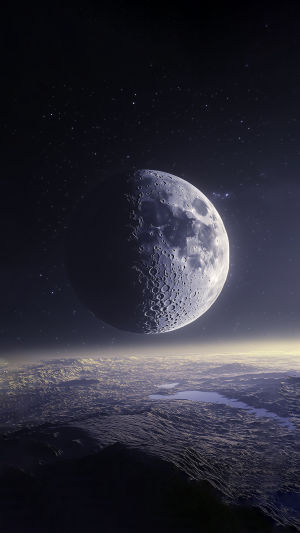The vastness of the universe continues to astound, and new revelations about the lunar landscape add to this captivating intrigue.
A recent study has unveiled that about 3.8 billion years ago, two monumental canyons were likely formed on the <b>moon</b> in an astonishingly brief time of less than ten minutes.
Nestled on the moon's far side, these enigmatic structures rival Earth's iconic <b>Grand Canyon</b> in scale, right near the lunar south pole, which NASA's <b>Artemis III</b> mission plans to explore by the end of 2026.
<h3>Formation Origins</h3>
These impressive canyons, part of the larger <b>Schrödinger impact basin</b>, were the result of an unidentified celestial body colliding violently with the <b>moon</b> billions of years ago.
The energy released from this cataclysmic event was colossal, estimated to be 1,200 to 2,200 times greater than the nuclear explosion intended for excavating an additional <b>Panama Canal</b>. Such astonishing energy not only created the Schrödinger basin but also sculpted the twin canyons, each etched into the lunar surface by the explosive aftermath of the impact.
<h3>Scientific Exploration</h3>
The implications of these celestial formations extend beyond mere observation; they present an incredible opportunity for future exploratory missions. Scientists hope to procure rock samples from the canyons, shedding light on the moon's cryptic history and the geological conditions during the solar system's infancy, a time when asteroids unleashed chaos upon heavenly bodies.
"The record of early Solar System bombardment has been erased from the Earth," notes lead author Dr. David Kring. Collecting samples from lunar sites like the <b>Schrödinger basin</b> is vital for understanding how such dramatic impacts influenced early terrestrial development.
<h3>Unveiling Geological Mysteries</h3>
The canyons, identified as <b>Vallis Schrödinger</b> and <b>Vallis Planck</b>, were known for their vast proportions, but recent research has provided even more clarity. Using data from NASA's <b>Lunar Reconnaissance Orbiter</b>, researchers mapped the region in unparalleled detail.
Vallis Schrödinger extends 168 miles in length and reaches depths of about 1.7 miles, while Vallis Planck measures 174 miles in length and plunges 2.2 miles deep. The findings offer a stunning comparison to Earth's <b>Grand Canyon</b>, highlighting the dramatic depth and scale of these lunar features.
<h3>Impact Details</h3>
A detailed analysis suggests that the strangling rush of energy propelled materials at staggering speeds, carving the canyons in a matter of minutes. The celestial body that struck the lunar surface traveled over 34,000 miles per hour, its impact sending debris ricocheting across the surface and resulting in these impressive formations.
In stark contrast, it took millions of years for <b>erosion</b> to sculpt the Grand Canyon, emphasizing the rapid yet impactful processes on the moon.
The discovery of the moon's canyons is not just about the structures themselves; it's an invitation to explore and redefine what is known about lunar history. With ambitious missions in the pipeline, the secrets these canyons hold could enhance understanding of both the moon and, by extension, the planet Earth itself.
Astronauts venturing into this <b>lunar</b> landscape will not only witness stunning formations but also delve into the dynamic narrative of our solar system’s past.





